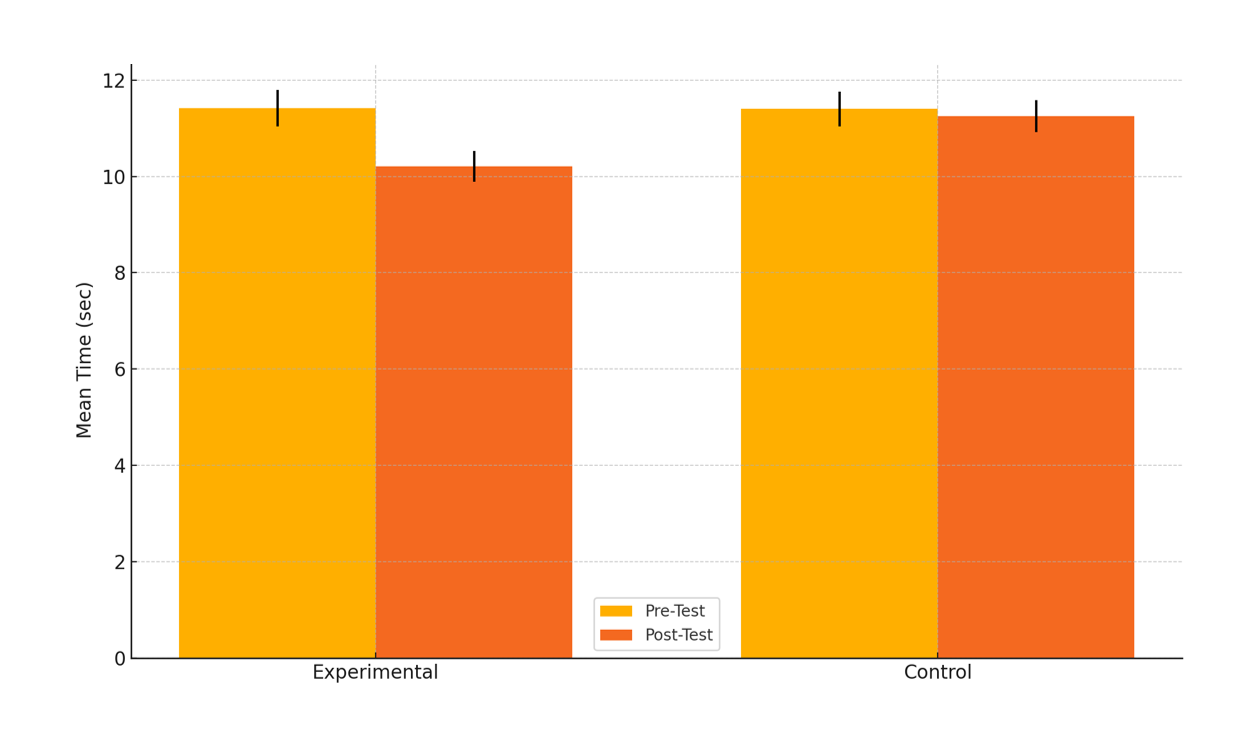Effect Of Plyometric-Weight Training And Specific Skill Training On Agility Of Beginner Fencers
Rani U1†, A2*†
DOI:https://doi.org/10.55968/ijems.v14i02.519
1† Usha Rani, Dean Faculty of Education, Chairperson Department of Physical Education, Kurukshetra University, Kurukshetra, Haryana, India.
2*† Ankit, Phd Scholar, Department of Physical Education, Kurukshetra University, Kurukshetra, Haryana, India.
This study aimed to evaluate the effect of an 8-week plyometric-weight training combined with fencing-specific skill training on the agility of beginner fencers aged 10–19 years in Karnal District, Haryana. A total of 60 beginner fencers were purposively selected and randomly assigned into two equal groups: an experimental group (n=30), which received the integrated training intervention, and a control group (n=30), which continued with their standard training routine. The intervention was conducted three times per week over eight weeks and included periodized plyometric and light-resistance exercises along with fencing-specific footwork and reaction drills. Agility was assessed using the Shuttle Run Test from the AAHPER Youth Fitness Test (1976), both before and after the intervention. Descriptive statistics showed a marked improvement in post-test scores for the experimental group (M=10.21, SD=0.32) compared to the control group (M=11.25, SD=0.33). Analysis of Covariance (ANCOVA) was used to control for pre-test scores, and the results revealed a statistically significant difference between the groups (F=225.61, p<0.001). Post hoc analysis confirmed a significant mean difference of -1.04 seconds (p<0.001), favouring the experimental group. The findings support that combined plyometric-weight and sport-specific skill training significantly improves agility in beginner fencers. This study highlights the importance of structured, age-appropriate training programs in developing foundational physical qualities for fencing. The research provides practical insights for coaches and sports educators working at the grassroots level, emphasizing the need for integrating physical conditioning with technical skill development for optimal performance enhancement.
Keywords: Plyometric training, Fencing-specific drills, Shuttle Run Test, Youth athletes, Agility development, ANCOVA, Beginner fencers
| Corresponding Author | How to Cite this Article | To Browse |
|---|---|---|
| , Phd Scholar, Department of Physical Education, Kurukshetra University, Kurukshetra, Haryana, India. Email: |
Rani U, A. Effect Of Plyometric-Weight Training And Specific Skill Training On Agility Of Beginner Fencers. ijems. 2025;14(02):44-51. Available From https://ijems.net/index.php/ijem/article/view/519/ |


 ©
© 